Geometry and the built environment
Posted by: Gary Ernest Davis on: April 1, 2011
 Geometric terms
Geometric terms
Students often forget geometric language they learned in earlier grades
The meaning – precise or vague – of words such as parallelogram, rhombus, angle bisector, acute angle, escape them.
They have not learned to talk “geometry”.
But the language is only a small part of the issue.
Much harder is that their teacher is almost certainly thinking about geometry in ways they cannot imagine: they cannot know what they do not know.
For example, students whose geometric thinking is at a beginning level might describe objects as “round” or pointy”
An object such as the following might be described as “long and thin”:
A teacher, on the other hand, is more likely to know a name: “rectangle” and to know properties: opposite sides same length and parallel, all angles right angles.
A teacher might also know relationships between properties: having opposite sides parallel and of the same length does not mean all angles are right angles:
Simply pointing out properties and relationships between them is not going to help a student reach that level of understanding.
Talking “geometry” like this one might as well be talking Hindi.
The student at a lower level of development is simply not going to understand the words or their intent.
van Hiele levels
This IS a developmental issue, and the two people who began the study of development of geometric thinking in students are Dina van Hiele-Geldof and Pierre van Hiele.
Their theory of the development of geometric thinking is known as the van Hiele model.
This model, which has been the subject of much empirical justification, posits several broad “stages” of development in geometric thinking.
Like all stage or level theories of development, the van Hiele model is flawed in that students show signs of one level and then regress, particularly as they are in transition from one broad level to another.
The van Hiele levels are static descriptions and so not capture the dynamic transitions students make as they are learning.
Yet if a teacher of geometry does not understand these levels of geometric thinking and has not found out where their students lie in relation to these levels, they are going to have a frustratingly difficult time teaching their students geometry.
Geometry of the built environment
One way for a teacher to address where their students might be in relation to the van Hiele levels is to get students to take pictures of geometric objects in the built environment.
Students can use cell phones to take pictures as they are out and about, at home, in shopping centers, in the street, at recreational areas, for example.
Students could upload their images to a WordPress blog, or other Web page set up by the teacher.
Students could write a few words describing their images and talk briefly to them in class.
This way a teacher can get an approximate understanding of where a student’s geometric thinking is in relation to the van Hiele levels.
That makes it easier for the teacher to adjust activities for a given student on the basis of what the teacher knows about how the student is currently thinking.
Kids will usually get quite motivated to find better and more interesting geometric images from the built environment.
Here’s a truly spectacular example:
When their interest peaks, and begins to wane, there’s always the natural environment.
Some pointers to the literature
Burger. W. F. (1986) and Shaughnessy, J. M. (1986) Characterising the Van Hiele levels of development in geometry. Journal for Research in Mathematics Education, 17, 31-48.
De Villiers, M. D. and Njisane, R. M. (1987) The Development of geometric thinking among black high school pupils in Kwazulu (Republic of South Africa). J.C. Bergeron, N. Herscovics & C. Kieren (Eds.) Proceedings of the 11th Conference of the International Group for the Psychology of Mathematics Education, Vol 3, pp. 117-123. Montreal.
Fuys, D., Geddes, D., Lovett, C. J. & Tischler, R. (1988) The Van thinking in geometry among adolescents. Journal for Research in Education [monograph number 3]. Reston, VA: NCTM.
Mayberry, J. (1983) The Van Hiele levels of geometric thought in pre-service teachers. Journal for Research in Mathematics Education, 14(1), 58-69.
Orton, R. E. (1995) Do Van Hiele and Piaget belong to the same research? Zentralblatt für Didaktiek der Mathematik, 27, 134-137.
Presmeg, N. (1991) Applying Van Hiele’s theory in senior primary geometry: phases between the levels. Pythagoras, 26, 9-11.
Schoenfeld, A. H. (1986) On having and using geometric knowledge. In James Hiebert(Ed.), Conceptual and procedural knowledge: The case of mathematics. London, UK: Lawrence Erlbaum Associates.
Senk, S. L. (1989) Van Hiele levels and achievement in writing geometry proofs . Journal for Research in Mathematics Education, 20, 309-321.
Usiskin, Z. (1982) Van Hiele levels and achievement in secondary school geometry. University of Chicago Van_Hiele_Levels_Usiskin
5 Responses to "Geometry and the built environment"
I’ve been doing a lot more of this myself this year, both personally capturing and sharing mathematical images, and having my students take and share photos, as well. First and foremost, it’s a way to appreciate the math all around us, but I’ve also enjoyed using Geogebra to fit curves to images (like this wave, or this <a href="http://mrhonner.com/2011/03/13/fitting-curves-to-squash/" squash). My students have also enjoyed that challenge.
I had not heard of the Van Hiele levels–thanks for sharing. This may be a way to put a little more rigor into this activity.
Sorry about the broken link, Gary: this is what I meant:
Fitting curves to squash: http://mrhonner.com/2011/03/13/fitting-curves-to-squash/
Love this. I always like to point out application. Geometry in the history of the world, as well, when it comes to innovations in building domes, and in modern recreation, as with taking shots in billiards. :)
Earlier in the year we drew personal mandalas, studying the history of them as well as the geometry, and explained hwy they represented us (using geometrical terms as part of the description). Students learned how to draw lines with a compass and we explored symmetry in nature and math as well.
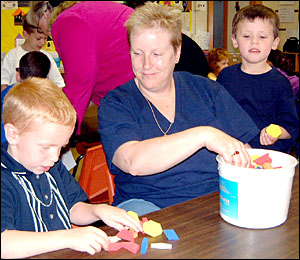
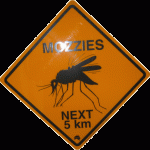

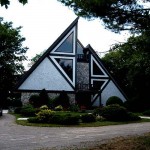
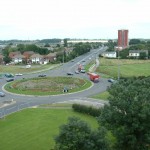



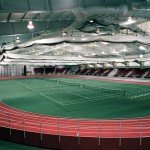







April 2, 2011 at 1:18 pm
This model [the van Hiele model], which has been the subject of much empirical justification . . .
Do you know of sources that I could consult which justifies this model empirically? I looked around and didn’t really find anything. The references at Wikipedia don’t really do this, I think.
Gracias.
April 3, 2011 at 11:32 am
It’s a good question.
i have added some older references i had to research on the van Hiele levels, including a 1987 document of Usiskin’s.
i haven’t kept up with recent developments in research in this area, but I I will do a search and post anything i find on the blog post.